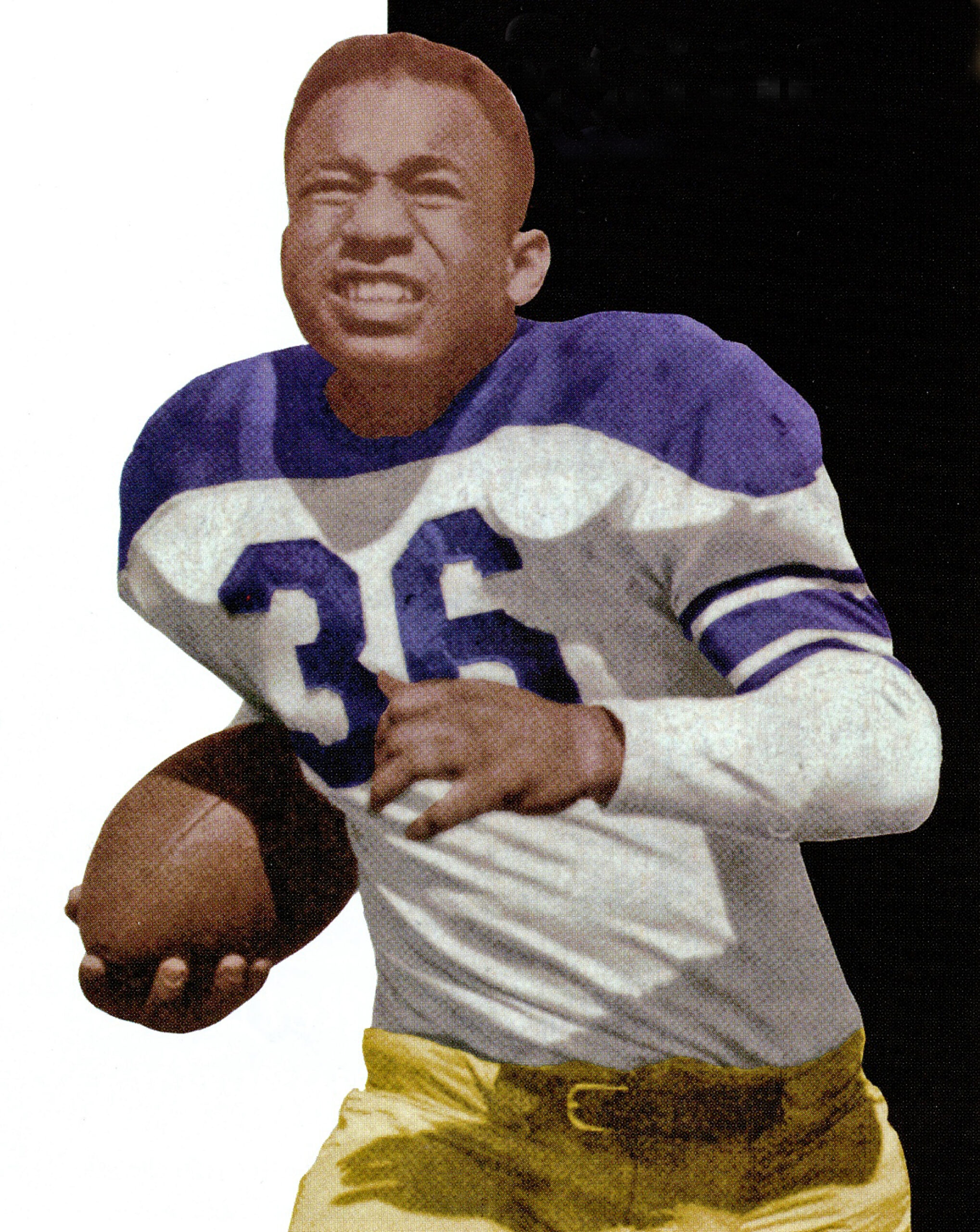Benjamin Franklin Kelly made history on September 19, 1953, when he became the first African American to play at an all-white college in Texas, San Angelo College (later Angelo State University, ASU). His San Angelo College debut came eight months before the U.S. Supreme Court’s Brown vs. Board of Education decision overturned the “separate but equal” doctrine.
On that historic night when he trod onto the football field at San Angelo College’s Bobcat Stadium, Kelly played defensive end and fullback, contributing to the Rams’ 26-0 victory over Phoenix College. His role in breaking the color barrier in Texas collegiate football has largely been overlooked because San Angelo College was, at the time, a two-year community college in the shadow of Southwest Conference (SWC) football powers such as the Universities of Texas and Arkansas and Texas A&M University. Kelly’s groundbreaking appearance came a dozen years before an SWC school, Southern Methodist University, signed Jerry LeVias, and another year after that, John Hill Westbrook of Baylor University became the first Black player in an SWC varsity game.
Born January 25, 1931, to Joe and Maggie Mason Kelly in San Angelo, Texas, Ben Kelly attended the segregated Blackshear High School, where he was a star running back for the Leopards. His senior season, he led the Leopards to a 12-1-1 record and the 1950 Negro Interscholastic League Class A State Championship in a 32-0 win over Huntsville Sam Houston.
After high school, Kelly earned a football scholarship at the University of Illinois, but he was drafted after his first semester and spent two years in the U.S. Army. After his honorable discharge in 1953, he returned home, hoping to play football at San Angelo College. That’s when he approached the college’s coaches, who sent him to college President Rex Johnston. After interviewing Kelly, Johnston escorted him to the registrar to enroll. With San Angelo College Board approval, Johnston thus integrated the college.
Kelly’s enrollment opened opportunities for two other Blackshear graduates, Annie Laura Owens and Mary Frances Simpson, to attend San Angelo College. Two years later, in 1955, Simpson became its first African American graduate.
Playing both defensive end and fullback during his two-year stint with the Rams, Kelly helped the team to a composite 10-8-1 record and earned first-team All-Pioneer Conference recognition both seasons. Kelly’s easy-going manner and his quick smile earned him freshman class favorite recognition from his fellow students.
After he finished his Rams football career, he spent a year on the roster of the San Francisco 49ers and the following season with the New York [Football] Giants before returning to San Angelo, where he began his professional career with the city’s Boys and Girls Clubs, starting as assistant director and retiring in 1996 as executive director.
In 2014, Kelly was inducted into both the ASU Athletic Hall of Honor and the Texas Black Sports Hall of Fame. That same year, ASU renamed the Center for Human Performance in his honor.
Benjamin Franklin Kelly died November 15, 2014, at the age of 83, and is buried in San Angelo’s Lawnhaven Memorial Gardens.
Do you find this information helpful? A small donation would help us keep this available to all. Forego a bottle of soda and donate its cost to us for the information you just learned, and feel good about helping to make it available to everyone.
BlackPast.org is a 501(c)(3) non-profit and our EIN is 26-1625373. Your donation is fully tax-deductible.
“Breaking the Color Barrier,” Angelo State University Alumni Magazine, Vol. 5, No. 2, Summer 2006, pp. 14-17, https://www.angelo.edu/live/files/27648-2006-summer-vol-5-no-2pdf
“Breaking the Color Barrier Again,” Angelo State University Alumni Magazine, Vol. 5, No. 3, Fall 2006.
“Benjamin Kelly Obituary,” Johnson’s Funeral Home, Published by Legacy Remembers, Nov. 19, 2014, https://www.legacy.com/us/obituaries/legacyremembers/benjamin-kelly-obituary?id=26586866
Robert D. Jacobus, Black Man in the Huddle: Stories from the Integration of Texas Football, (College Station: Texas A&M University Press).

